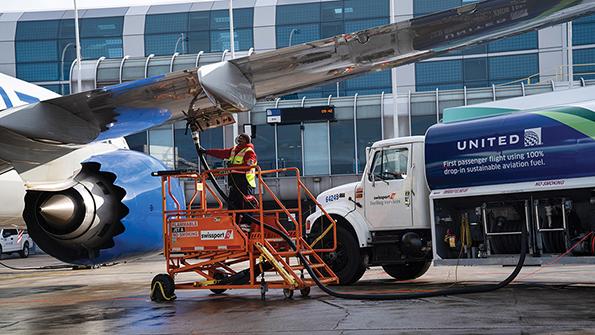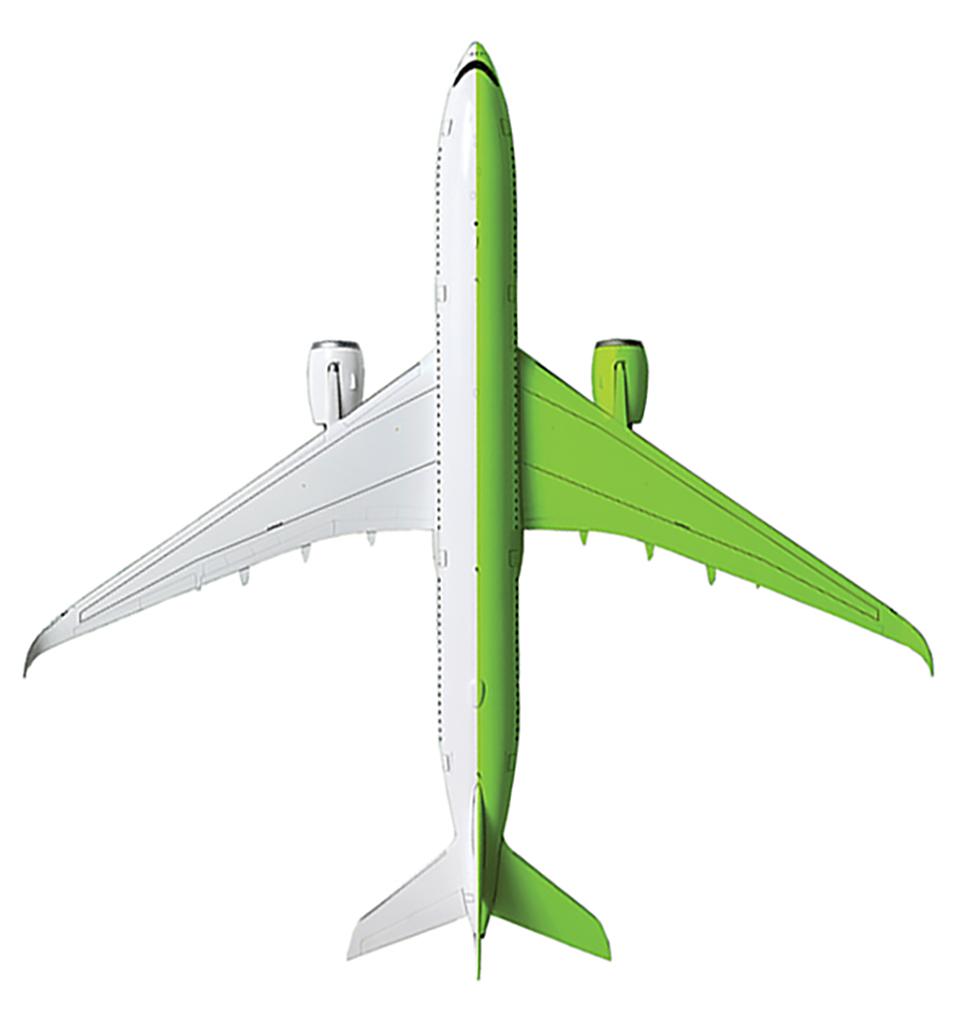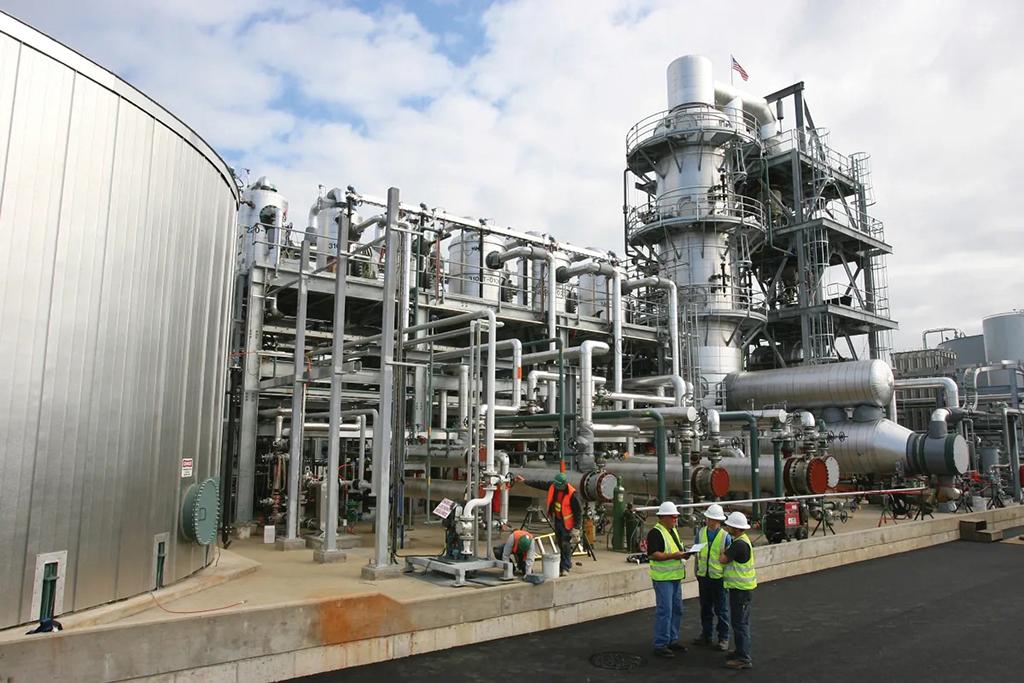
Automobile driving might not be the most appropriate analogy to draw when describing how much the momentum has changed in the pursuit to grow the supply of sustainable aviation fuel (SAF). Nonetheless, it’s like a shift from second to sixth gear.
If proof were needed of how the importance of SAF development and production has gone mainstream, look to the 2022 US Inflation Reduction Act that passed the Senate and the House and was signed into law by President Joe Biden in August.
Nothing in the bill’s title would indicate the significant and long overdue boost this legislation provides the SAF and commercial air transport industries. Yet included in the bill, which was welcomed by airlines and fuel suppliers alike, is a tax credit that will help make SAF more price competitive.
Combined with multiyear offtake agreements for millions of gallons SAF signed by airlines in recent months, renewable fuel producers expect the blenders’ tax credit (BTC) to help in raising the billions of dollars of financing needed to build planned biorefineries.

At $1.25-1.75/gal. depending on the percentage reduction in life-cycle greenhouse gas emissions achieved by the fuel, the performance-based tax credit will reduce the price premium for SAF, which costs two to three times that of fossil-based jet fuel.
Some say it’s still not enough. But a SAF tax credit in the US has long been sought by the industry and progress has been painfully slow, making the bill an important breakthrough and indicator of how the SAF supply issue has reached broader public attention.
Sen. Maria Cantwell (D-Washington), hailing the $297 million SAF and low-emissions aviation technology grant program included in the bill, said it would “help build the infrastructure to produce sustainable aviation fuel and get it where it is needed.”
Even just few years ago, when SAF was available and proven, it was not a talking point for US lawmakers.
United Airlines CEO Scott Kirby, a prominent advocate for SAF and green technology development, said the incentives would be “crucial to helping US producers meet demand for clean fuels, while also stimulating US jobs in this emerging industry.”

Bryan Sherbacow, CEO at US producer Alder Fuels, said the bill would provide a framework that would “benefit everyone throughout the SAF supply chain; from the manufacturers of the proprietary green crude, like Alder, to the biomass producers, refiners, airlines and wider aviation community.”
But he stressed that the political momentum must continue.
“Regulators must now keep pace with the innovation of industry and the public policy momentum this administration has shown on climate change. This means providing clear guidance and a path forward so the entire sector can access the diverse, natural and abundant supply of biomass we need to push us toward our 2030 targets,” Sherbacow said.
It’s the targets and timelines that are driving the urgency to stop talking about SAF development and mass production challenges and get on with the investment and action that’s needed. The global airline industry’s commitment to achieving net-zero carbon emissions by 2050, led by IATA, is a major and technologically tough deadline, but many want to see net-zero happen earlier and some airlines have targeted 2040.
For all the stepped up and significant research and development in hydroelectric-powered aircraft and other technologies, this will not happen without far more widespread use of SAF. IATA believes that SAF will be the single biggest contributor to achieving the overall net-zero targets. SAF’s contribution will be 65%, with the remaining 35% coming from a combination of new technology, such as electric and hydrogen power, infrastructure and operational efficiencies, and offsetting and carbon capture.
THREE BILLION GALLON GOAL
Steve Csonka, executive director at the Commercial Aviation Alternative Fuels Initiative (CAAFI), a coalition of airlines, aircraft manufacturers, energy producers and US government agencies, notes that in the US, much work has been going on behind the scenes for some 10 years. The targets have crystallized that work and given it far more public visibility. Among the goals: having an annual US SAF supply of 3 billion gallons by 2035 and replacing petroleum-based jet fuel by 2050. Even the 2035 goal is a high reach. In 2021, for comparison, the US produced just over 6 million gallons of SAF.
“We’re still absolutely in our infancy,” Csonka said as a panelist on an Aviation Week/ATW webinar on SAF supply. “People look back at the last 10 years and say, ‘What have you been doing?’ We’ve been doing a lot. We’ve built this foundation that allows us to springboard. Basically, what we have to do is double our production capacity every year, mathematically, in order to achieve that 3 billion gallons. And quite frankly, that one doesn’t look as hard to me as the longer-term goal. We’ve got a lot more work to do to get to that full replacement in 2050, but we’ll give it a yeoman’s try.”
Csonka, airlines and suppliers generally agree on the two fundamentals that will give them a fighting chance of meeting their targets.
The first is getting political support—and the US bill is an example of the dial moving in the right direction.
Second is investment. Increasing the SAF supply and narrowing the price gap with conventional jet fuel is a costly endeavor. But airlines are increasingly optimistic that the financial support can be found.
Jonathan Counsell, head of sustainability at International Airlines Group (IAG), which includes British Airways, said that to get SAF to a point that it makes up 10% of the industry’s fuel needs by 2030, some $250 billion will be needed for development and SAF production plant construction. To get to the 65% that IATA believes is necessary, Counsell says investment between $1 trillion and $1.5 trillion will be needed to build some 5,000 plants.
“That’s a huge amount of capital, but it’s all about policy. And we’ve been talking to investors for 10 years and they’re very clear that there’s no shortage of capital. Particularly now, there are trillions of dollars trying to find homes and sustainability is a very attractive area for them, but they’re very clear—there’s some clear policy needs and we’re not asking for anything that hasn’t been done in other renewable industries,” Counsell said during the webinar, pointing to offshore wind power development in the UK as an example.
“To the UK government’s credit, part of the challenge we’ve had to manage was the number of government departments—typically transport environment, climate change and treasury. But two years ago they set up the Jet Zero Council, which has been very successful for us and works similar to the CAAFI operation. We all agree SAF is critical.” Counsell said.
United Airlines is proof of the willingness of industry partners and investors to step up. The Chicago-based company has formed nearly 30 partnerships with corporate customers on the passenger and cargo sides of its business to fund the SAF premium.
“We’ve now hit commitments for 7 million gallons. We’ve got more plans for more customers on the way and more volume,” United senior manager, environmental responsibility, Aaron Robinson said during the panel.
“And one of the big things that frees us up to do, is instead of taking our money and funding and going and buying SAF today, we can go and invest in it instead. And so now we’re up to really four different SAF-producer investments. Alder is one and it means we’re able to go and accelerate that change. And instead of having to wait for producers to come online, we can go and drive some of that change ourselves.”
Alder chief sustainability officer Nancy Young pointed out that the investment was needed not just to scale up SAF production, but also to develop new-generation types of SAF.
“We’ve been at SAF 1.0, as we would say at Alder, for a while, which is really focusing on large technology refineries that take fat oils and greases and hydro process. That’s a problem in general because there’s a lot of demand for the type of feed stock you’ve got there and there’s a very capital-intensive approach,” she said during the webinar.
“That’s part of the reason, among others, that prices have been going up. To really scale this, we need to address those issues. What are the feed stocks and how do we enable more of those? What we’re looking to do at Alder is really marry this next generation of technology to bring SAF 2.0, an upgraded version, to be able to bring our units right where the feed stock is, and that we’re not really using today. It’s woody waste, agricultural waste and hopefully regenerative grasses. It makes it much more cost competitive because you bring those units where the feed stock is and you’re bringing a lot more feed stocks into play.”
BUILDING MOMENTUM
Csonka is confident that the momentum will continue.
“I think the airlines can continue to communicate with their customers, their constituencies, on the fundamental need here. We can never communicate too much. Time has proven that for sure,” he said. “But at the end of the day, capital is available. The sticky issue is whether the capital markets are willing to invest in industrial application where the fundamental economics are not sound. And that comes back to policy in the near term being needed to make those economics sound. Not that we need to continue to rely on them forever, but we have to get this industry started. And we’ve seen time and time again through the years, that smart policy can get a new industry started and allow that industry to start coming down a learning curve and reduce costs.
“At some point all of those things come in together and may allow this industry to flourish. And those are the things that we’re all working on. The thing that we have working against us at present is that people are impatient. And we get a lot of sniping from outside of the industry on and off: ‘You’re never going to meet these commitments. This is too hard.’ Well, I’m sorry, we’re not asking for free capital. This is capital-based on business cases for actually producing a product from a renewable resource. Just like the petroleum industry does by pulling hydrocarbon molecules out of the ground.”
A GOOD START
The tax credit in the US bill has its shortcomings, as a report by Barclays Capital makes clear. For one thing, the duration of SAF incentives is much shorter—only running through 2027—than had originally been hoped for. And they don’t overcome the SAF vs. conventional jet fuel jet gap. However, Barclays’ research analysts still call it “a good start.”
The SAF BTC is intended to address disadvantages aviation faces in competing for fats-to-fuel feedstock and production capacity with renewable diesel (RD) for ground transportation. Price parity with conventional jet fuel will be based on other factors, such as petroleum cost and carbon pricing applied to fossil fuels, Csonka told ATW after the bill passed both congressional houses.
“The original intention of the aviation industry in backing a SAF-specific BTC was to simply close the existing policy disparities between SAF and RD. This disparity was brought into sharp focus for our industry as we see ongoing plans to commercialize 5-10 billion gal./year of RD leading up to 2030, but a very limited amount of HEFA [hydroprocessed esters and fatty acids] SAF,” he said.
Aviation sought a tax credit that would offset the policy disparities and cover the incremental capital expenditure for an RD producer to add the distillation and handling infrastructure for SAF. With an incremental $0.25-0.75 for SAF over RD, “this incentive will likely work to induce some to produce SAF … but not others,” Csonka said, adding that an investment tax credit for production facilities and robust funding for the US government/industry SAF Grand Challenge were also needed.
Nonetheless, a sense of urgency—even excitement—has emerged about SAF. And the air transport industry is eager to ride that wave.
–Graham Warwick contributed to this article. The Aviation Week/ATW SAF webinar can be viewed at bit.ly/3pt11Tv.





